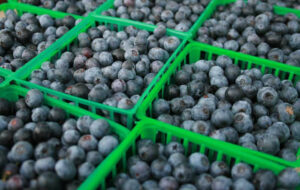Prune Blueberries in February
go.ncsu.edu/readext?768563
en Español / em Português
El inglés es el idioma de control de esta página. En la medida en que haya algún conflicto entre la traducción al inglés y la traducción, el inglés prevalece.
Al hacer clic en el enlace de traducción se activa un servicio de traducción gratuito para convertir la página al español. Al igual que con cualquier traducción por Internet, la conversión no es sensible al contexto y puede que no traduzca el texto en su significado original. NC State Extension no garantiza la exactitud del texto traducido. Por favor, tenga en cuenta que algunas aplicaciones y/o servicios pueden no funcionar como se espera cuando se traducen.
Português
Inglês é o idioma de controle desta página. Na medida que haja algum conflito entre o texto original em Inglês e a tradução, o Inglês prevalece.
Ao clicar no link de tradução, um serviço gratuito de tradução será ativado para converter a página para o Português. Como em qualquer tradução pela internet, a conversão não é sensivel ao contexto e pode não ocorrer a tradução para o significado orginal. O serviço de Extensão da Carolina do Norte (NC State Extension) não garante a exatidão do texto traduzido. Por favor, observe que algumas funções ou serviços podem não funcionar como esperado após a tradução.
English
English is the controlling language of this page. To the extent there is any conflict between the English text and the translation, English controls.
Clicking on the translation link activates a free translation service to convert the page to Spanish. As with any Internet translation, the conversion is not context-sensitive and may not translate the text to its original meaning. NC State Extension does not guarantee the accuracy of the translated text. Please note that some applications and/or services may not function as expected when translated.
Collapse ▲Blueberries are one of the most maintenance free of all the small fruits that can be grown by home gardeners. These long-lived plants will bear for many years and if fertilizer needs are provided for and correct pruning is maintained, the yields should be substantial. Plants should produce about ½ pound of fruit per bush by the third year and mature plants can easily produce 12 to 25 pounds of blueberries on each plant.
Fertilizer needs for plants vary because of size. While a new plant needs only one tablespoon of 10-10-10 per plant at six-week intervals, a bearing plant should be given one cup of 10-10-10 every six weeks until July 1. Fertilizer should not be applied in the spring until the first leaves have reached full size.
Pruning helps to control the size of the bush and increases fruit size. It also encourages new, vigorous growth on which next year’s fruit is borne. When a new bush is planted it should be pruned back severely when planted. Older plants should be top pruned in late July to control the height of the bush. During the winter, old canes and tall shoots should be cut back to force branching at a lower level. Try to take out old canes in the center of the plant to increase air movement. Remember that flowers are borne on 1-year-old wood so pruning is essential to promote new growth each year. This year’s pruned branches will provide next year’s fruit.
Blueberries get ripe about two months after they bloom. Berries continue to grow in size and flavor after they turn blue. Fruit should not be picked until it is fully ripe, three to six days after turning blue.
February is the best time to thin old canes here in Burke County. Yearly pruning and thinning keeps plants in top producing shape. Remember that only old canes from the middle of the bush should be pruned at this time. Take out 1/3 of the oldest canes at ground level. Top pruning is done in late July after harvest is over.





